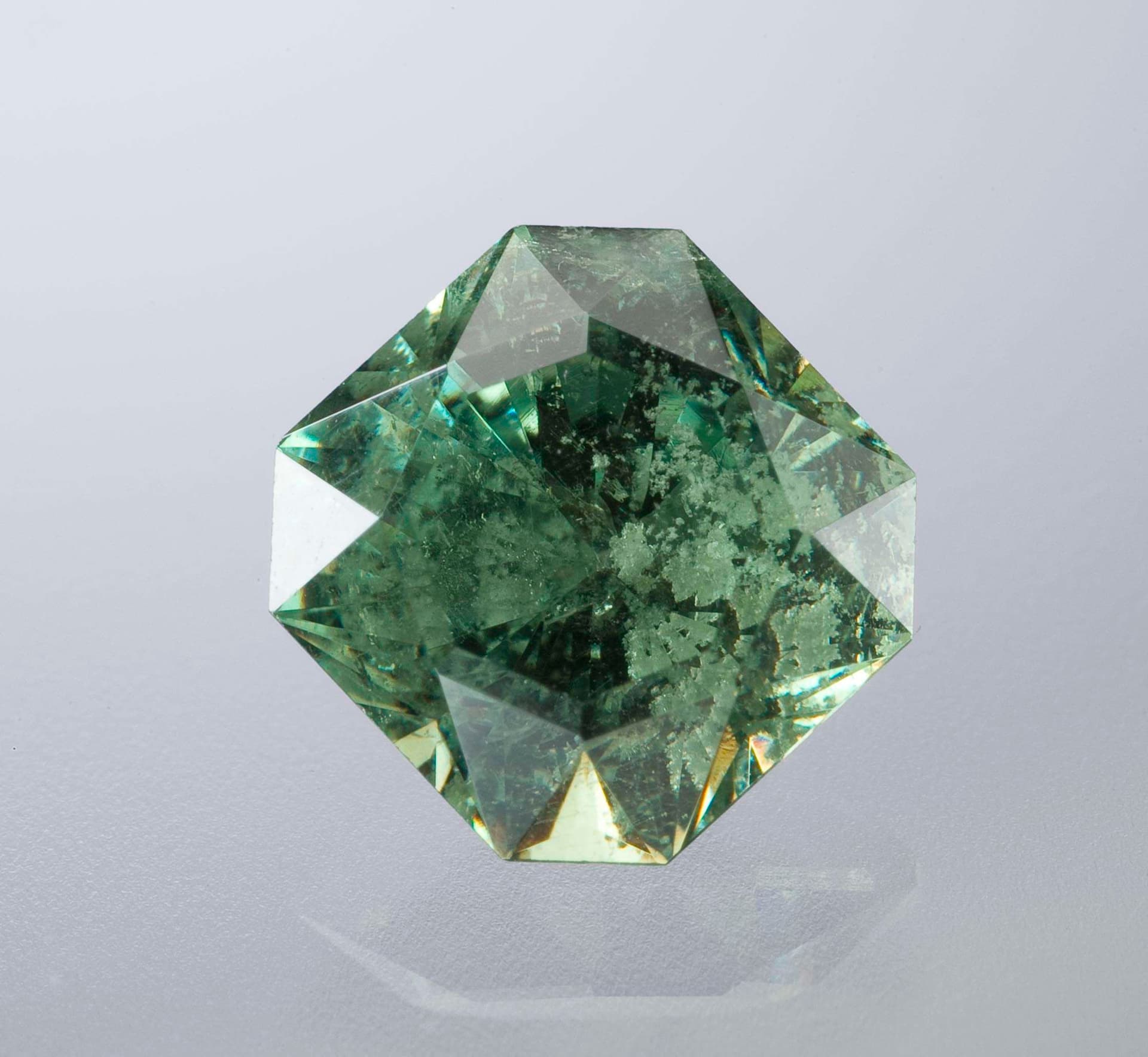Demantoid Garnet Value, Price, and Jewelry Information
One of the rarest garnet varieties, demantoid can have a green color that rivals emerald and a fire that exceeds diamond. Demantoids are highly prized by both gem collectors and jewelry enthusiasts.
3 Minute Read
One of the rarest garnet varieties, demantoid can have a green color that rivals emerald and a fire that exceeds diamond. Demantoids are highly prized by both gem collectors and jewelry enthusiasts.
Start an IGS Membership today
for full access to our price guide (updated monthly).Demantoid Garnet Value
Even with the discovery of new sources since the 1990s, demantoid remains very rare. It’s the most well-known andradite garnet and one of the most valuable garnets of any variety. Clean, facetable stones command very high prices per carat. However, demantoids with horsetail inclusions — wavy, golden, and fibrous — are especially coveted by collectors.
For more information on value and quality factors for demantoids, consult our buying guide.
Comments
Demantoid was discovered in Russia in the early 19th century. In 1854, the noted mineralogist Nils Gustaf Nordenskiöld identified this gem as a variety of andradite garnet. These stones had such exceptional brilliance and dispersion or "fire" that they inspired Nordenskiöld to name demantoid after its "diamond-like" appearance.
In fact, this garnet has greater brilliance and a higher dispersion than its diamond namesake as well as other well-known green gemstones, such as emerald and peridot. Although dark body colors can mask their dispersion, small demantoids with light colors are quite dazzling.
Demantoid was a popular gemstone during the Belle Époque period (1890-1915), especially in Art Nouveau jewelry. The Russian Czars particularly favored this gem.
Russia was long the only source of demantoids, but supplies ran so low, these gems were usually seen only in antique jewelry pieces. However, since the 1990s, new discoveries in Namibia, Madagascar, and other locations, as well as renewed mining in Russia, have made the gem more available. Today, demantoids are still desirable, but very expensive, jewelry stones.
Identifying Characteristics
Horsetail inclusions of byssolite or chrysotile, usually golden in color, are named after their long, wavy appearance. These inclusions have long been considered diagnostic for identifying demantoids. However, a 2018 study found horsetail inclusions in non-demantoid (brown) andradite. Thus, horsetails may not be sufficient in and of themselves for identifying demantoids, nor do all demantoids have horsetails.
Inclusions in demantoids may rarely produce cat's eye gems.
Although demantoids may have an emerald-like color and included appearance, the optical and physical properties of these two distinct gem species differ considerably. Most visibly, demantoids have greater dispersion and no birefringence. (Note that some demantoids may show anomalous birefringence. A polariscope examination can help determine if a stone is truly birefringent).
Like demantoids, tsavorites and uvarovites are rare garnet varieties with emerald-like color. However, the specific gravity (SG) and dispersion of demantoid exceed that of its green garnet brethren.
Synthetics
Demantoid hasn't been synthesized, but green glass as well as green yttrium aluminum garnet (YAG), a synthetic garnet, have been used as simulants.
Enhancements
Heating may improve demantoid color. This is a stable and undetectable treatment.
Sources
Historically and currently, Russia has been an important producer of demantoids. Notable gem sources include the Ural Mountains region, the Koryakskoe plateau, and the Kola Peninsula.
Since 1996 and 2009, respectively, Namibia and Madagascar have become commercially important sources.
In Italy, Ala, Piedmont produces dark, apple-green material. Val Malenco, Sondrio Province also produces demantoids.
Other notable sources of gem-quality demantoids include the following:
- Afghanistan; Azerbaijan; Canada; Democratic Republic of the Congo; Iran; Mexico; Pakistan; South Korea; Sri Lanka; San Benito County, California, United States.
Stone Sizes
Demantoids are typically small stones. Stones larger than 10 carats are very rare. Faceted stones greater than 1 carat are rarely seen. The largest demantoid ever found hailed from the Russian Urals and weighed 252.5 carats or 50.5 grams.
The Smithsonian Institution has a faceted 11.24-carat specimen on display.
Trade Names
Consumers may encounter demantoids offered for sale under such names as "Siberian emeralds," "Siberian chrysolites," and "Ural chrysolites." Of course, garnets constitute a distinct group of gem species from emeralds. "Chrysolite" is an archaic term for green to yellow-green gems that has been applied to peridots as well as chrysoberyls and prehnites. All of these gems also constitute species distinct from demantoids.
For more examples of false or misleading gemstone names, consult this article.
Care
Heat sensitive garnets, like demantoids, should be cleaned with warm water, detergent, and a soft brush. Avoid mechanical cleaning and exposure to extreme heat.
Some demantoids may have a hardness of 6.5, which means they are somewhat susceptible to scratching. Therefore, use protective settings for these gems, especially if used as ring stones.
Consult our gemstone care guide and jewelry cleaning guide for more information.
Joel E. Arem, Ph.D., FGA
Dr. Joel E. Arem has more than 60 years of experience in the world of gems and minerals. After obtaining his Ph.D. in Mineralogy from Harvard University, he has published numerous books that are still among the most widely used references and guidebooks on crystals, gems and minerals in the world.
Co-founder and President of numerous organizations, Dr. Arem has enjoyed a lifelong career in mineralogy and gemology. He has been a Smithsonian scientist and Curator, a consultant to many well-known companies and institutions, and a prolific author and speaker. Although his main activities have been as a gem cutter and dealer, his focus has always been education.
Donald Clark, CSM IMG
International Gem Society
Related Articles
Garnet Buying Guide
Demantoid Garnet Buying Guide
Identifying Garnets Simplified
Hydrogrossular Garnet Value, Price, and Jewelry Information
Never Stop Learning
When you join the IGS community, you get trusted diamond & gemstone information when you need it.
Get Gemology Insights
Get started with the International Gem Society’s free guide to gemstone identification. Join our weekly newsletter & get a free copy of the Gem ID Checklist!
